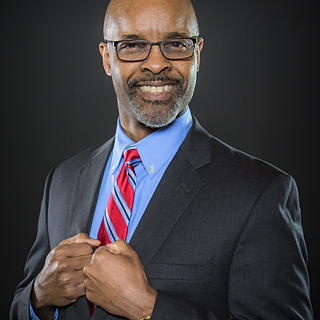Maxims from Mike - If it's not broken, break it and make it better!
- Mike Nwankwo
- Apr 30, 2019
- 4 min read

Hello Leaders,
Welcome to Today. This week's Leadership and Personal Development tip is about "challenging the process".
Maxim: What got you here won't get you there. - Marshall Goldsmith
Leaders look for ways to do things faster, better, and cheaper. They understand change is inevitable. To put it bluntly, organizations either adapt or cease to exist. Having a shared vision is critical. It is also critical to recognize that when trying to go some place new, it requires a different path, a different method, and a different mental map. It requires challenging the process.
A key component of challenging the process (a different path) is seizing the initiative. Teams will be faced with uncertainty as they march towards the shared vision. Everyone performs better when they take charge of change. Yes. Leaders seize the initiative themselves. However, the best leaders encourage this same behavior in others. When facing uncertainty, where no path has been forged, many followers are reluctant to speak up. They are reluctant to take charge of change.
Kouzes and Posner offer these suggestions as an aid.
Create a can-do attitude by providing opportunities for people to gain mastery on a task one step at a time. Invest in training your people.
Encourage mental simulation. Playing a scenario through in your mind until you can picture it frame by frame is a terrific way to encourage and support initiative.
Find ways for people to stretch themselves by regularly setting the bar incrementally higher. Leaders balance the human need to grow and develop with a similar need to be successful.
Provide positive reinforcement by saying things like "I know you can do it" and point to the small wins already accumulated.
A second key component of challenging the process (a different method) is preparing the team for transformation. Tod Bolsinger (author of Canoeing the Mountains) said, "Leadership is energizing a community of people toward their own transformation in order to accomplish a shared mission in the face of a changing world." He also said, "Leadership requires shared, corporate learning expressed in new shared, corporate functioning. In order to act or function differently in a changing world, all true leadership will require transformation. To that end, all true leadership will be anchored in the principles of adaptive leadership."
What is adaptive leadership? According to Ronald Heifetz and Marty Linsky, adaptive leadership is not about finding the best-know or most-available fix to a problem, but instead adapting to the changing environment or circumstances so that new possibilities arise for accurately seeing, understanding and facing challenges with new actions (emphasis mine). In short, our core values remain fixed but our methods must change to reach the new end state we have envisioned. What got us here won't get us there!
The third key component of challenging the process (a different mental map) is captured by the slogan of Apple, "Think different(R)". Especially in the technology industry, if companies do not adapt swiftly, they cease to exist. Apple wants employees who are not afraid to challenge the status quo. Successful organizations embrace diversity and inclusion because it brings different perspectives and creative solutions to evolving challenges. As change comes more rapidly, the world will need more leaders who are adept at leading strategic change. Otherwise, we will continue to see businesses, churches, schools, and other entities failing because they did not change.
J. Stewart Black (author of It Starts with One) insists, "Part of the reason why the failure rate is so high is because there are three inconvenient truths about change. Change is hard. Change is expensive. Change takes time. He lists three barriers we often face.
Failure to see. Clearly, if we fail to see threats or opportunities, we will not make needed changes.
Failure to Move. Although it sounds illogical, there is ample evidence that failure to move is quite common.
Failure to finish. Although recognizing the need for change is the thrust that gets us going, and moving down the new path lifts us off the ground, if the momentum cannot be maintained, the initial upward lift needed to fly is overpowered by the constant downward pull of gravity and natural resistance to change, and the change comes crashing back to earth.
Overcoming these barriers requires a different mental map. There is hope. Solutions and tools exist to help organizations see the need for change, begin actually moving, and fight through the finish so that real payoffs can be captured.
In summary, effective leaders challenge the process and create an environment for others to do likewise. They bring in people who share similar values and believe what they believer but think differently. "But we've never done it that way" should be a statement buried in the past. So go ahead and break it (old method), and make it better (new method)!
To learn more about challenging the process and/or overcoming the three barriers listed above, please contact us. At Apogee, we work with entities to strengthen their pipeline of leaders. We specialize in strengthening the pipeline of diverse leaders. We welcome the opportunity to help you grow your team and/or you personally in the area of leadership.
That's it for now. Until the next tip....
BE SURE TO ASK ME ABOUT LIVE2LEAD 2019!

Mike Nwankwo
Founder & CEO
216.505.0254
Please subscribe to my mailing list and share with your friends. Thanks.
Mobile users can go to https://www.apogeeleader.com and click on "Contact" to subscribe.





Comments